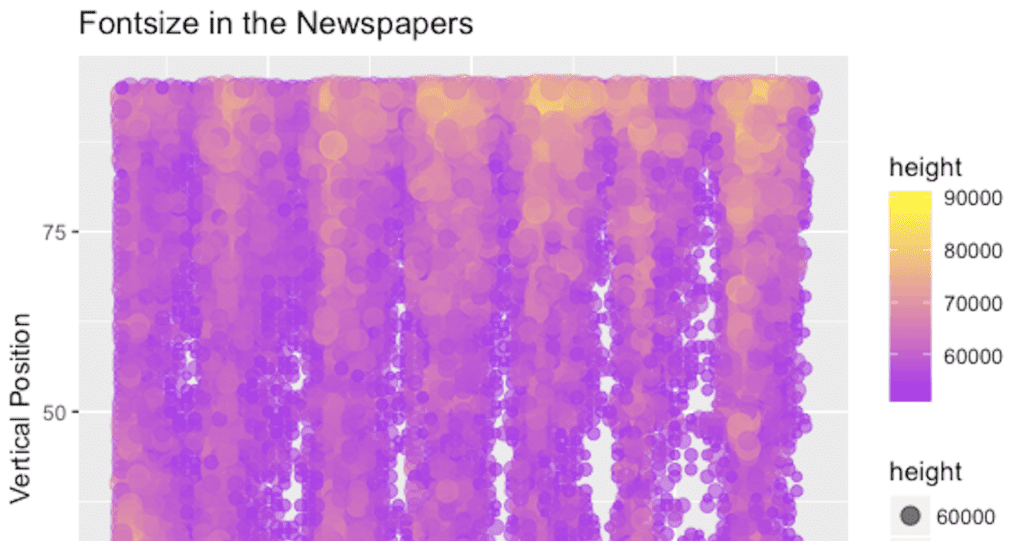By Bill Quinn
Attentive readers flipping through magazines and newspapers around the turn of the twentieth century would have noticed gradual cosmetic transformations. In newspapers, bold, large fonts would guide the reader’s eyes across the page and smudge their fingertips with still wet ink. Magazines became thick with heavily glossed pages, advertising various products in bright and iridescent colors. These visual changes are telling byproducts of a new phase of print culture in which multiple technological and social changes coincided: population and literacy rates in America and England grew rapidly across all demographics and new technologies enabled materials to be printed faster, cheaper, and brighter. These developments had the effect of quickly diversifying the reading public of print culture, creating new audiences with different interests.
By 1891, publishers responded to these new, avid readerships by lowering the prices of their periodicals below the cost of production and recuperating profits with space sold to advertisers. Although not every magazine at the time was dependent on advertising—many rejected its commercialism—this new advertisement-driven business model became the norm and its repercussions reached most corners of print culture. If advertisement revenues became the emerging paradigm of periodicals by the end of the nineteenth century, then it seems likely that significant textual shifts would have accompanied this moment in literary history.
My NULab project explores the possible consequences that advertising had on print culture, specifically newspapers and magazines, by computationally analyzing stylistic and semantic patterns during this era of ads. The design and interpretive decisions built into my work seek to answer a set of questions. Did the proliferation of advertisements change the ways that newspapers presented news and information? What rhetorical or stylistic consonance did advertising share with literature published in the magazines? Lastly, might styles of advertisements serve as signs or markers of a diverse and rapidly changing culture of readers? I have modeled these questions from others who have done research on advertising during this time period, namely Ellen Gruber Garvey, Patrick Collier, Robert Scholes, and Clifford Wulfman, and many others. But, to my knowledge, there has not yet been a large scale computational analysis of advertisements.

Working with the Viral Texts Project, I am using Chronicling America’s digitized collection of newspapers to access not only the textual content on each page but also metadata information about the content’s font type and sizes. My goals for the first phase of my project are to use the font sizes as indicators of advertisements as well as other content that had adopted the tactics of advertising. My hope is that the details about where large fonts appear on the pages of newspapers might serve as a proxy for text blocks that were either advertisements or articles that mimicked the styles of advertisements.
The coordinates of large fonts provides a map of textual content that was typographically designed to advertise itself from newsstands to the casual passerby. Isolating and extracting these text blocks will enable an analysis of stylistic and lexical patterns of advertising in newspapers and magazines. Future goals for this project include using word vectors and topic modeling to explore possible cultural and semantic divisions within advertising. Before that, however, I will be re-writing my script to leverage parallel computing in order to explore the entire Viral Texts corpus rather than a small subset. This will allow me to hone in on advertising styles and practices across generations and regions.



